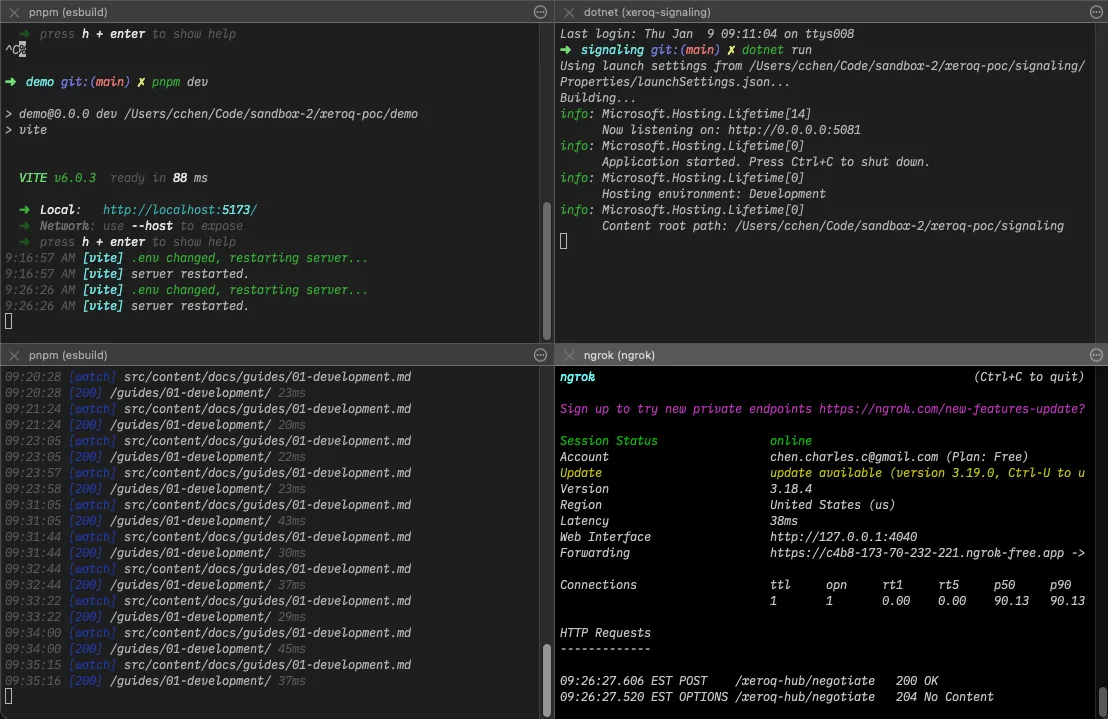Development
This document will guide you through how to set up for local development.
Code Organization
The code is organized using a pnpm workspace which allows referencing of the package locally.
| Directory | Description |
|---|---|
| Demo | Contains a fully functional demo app written in Vanilla JS. |
| Docs | Contains this documentation that you are reading (an Astro.js project). |
| Packages | Contains the source for the actual NPM packages. |
| Signaling | Contains the signaling server implementation in .NET 9 using SignalR. |
The published documentation is hosted on Firebase using Firebase hosting and the demo app uses Google Cloud Run to run the backend on demand. No database is present.
Starting the Pieces

Development will typically involve 3 terminals (bottom left above is the docs):
| Root | Command | Description |
|---|---|---|
/signaling | dotnet run | Start the signaling server on port 5081 |
/demo | pnpm dev | Start the demo application on port 5173 |
/ | ngrok http 5081 | Start ngrok to proxy an externally accessible URL to your local development environment (so you can test with your phone) |
In addition to this, I recommend using Visual Studio Code’s built in dev tunnels. Forwarding to port 5173 (you can also use ngrok for this if you set it up for multiple ports). For testing in the docs, you’ll need to set up 4321 as well and update the /docs/.env file.
The two forwarded ports are covering different use cases, but both are required for you to test with your mobile device, for example. 5173 (via dev tunnels) exposes the UI front-end in the /demo app. 5081 via ngrok exposes the SignalR endpoint because dev tunnels does not play nicely with HTTP/2 which is used during the SignalR negotiation.
In the /demo directory, make a copy of the .env.sample file and name it .env.
Here, you’ll need to place the two proxy URLs:
# This is the URL assigned by dev tunnels; it is typically "static"PUBLIC_INTERFACE_URL=https://4gch11f2-5173.use.devtunnels.ms/
# This is the URL assigned by ngrok; if you do not have a paid# account, this is dynamicPUBLIC_SIGNALING_SERVER_URL=https://c4b8-173-70-232-221.ngrok-free.app/snaprtc-hub
# This is a static session ID to use for testing so that when the# page refreshes, it regenerates the same session (typically random)PUBLIC_STATIC_SESSION=TEST_SESSION